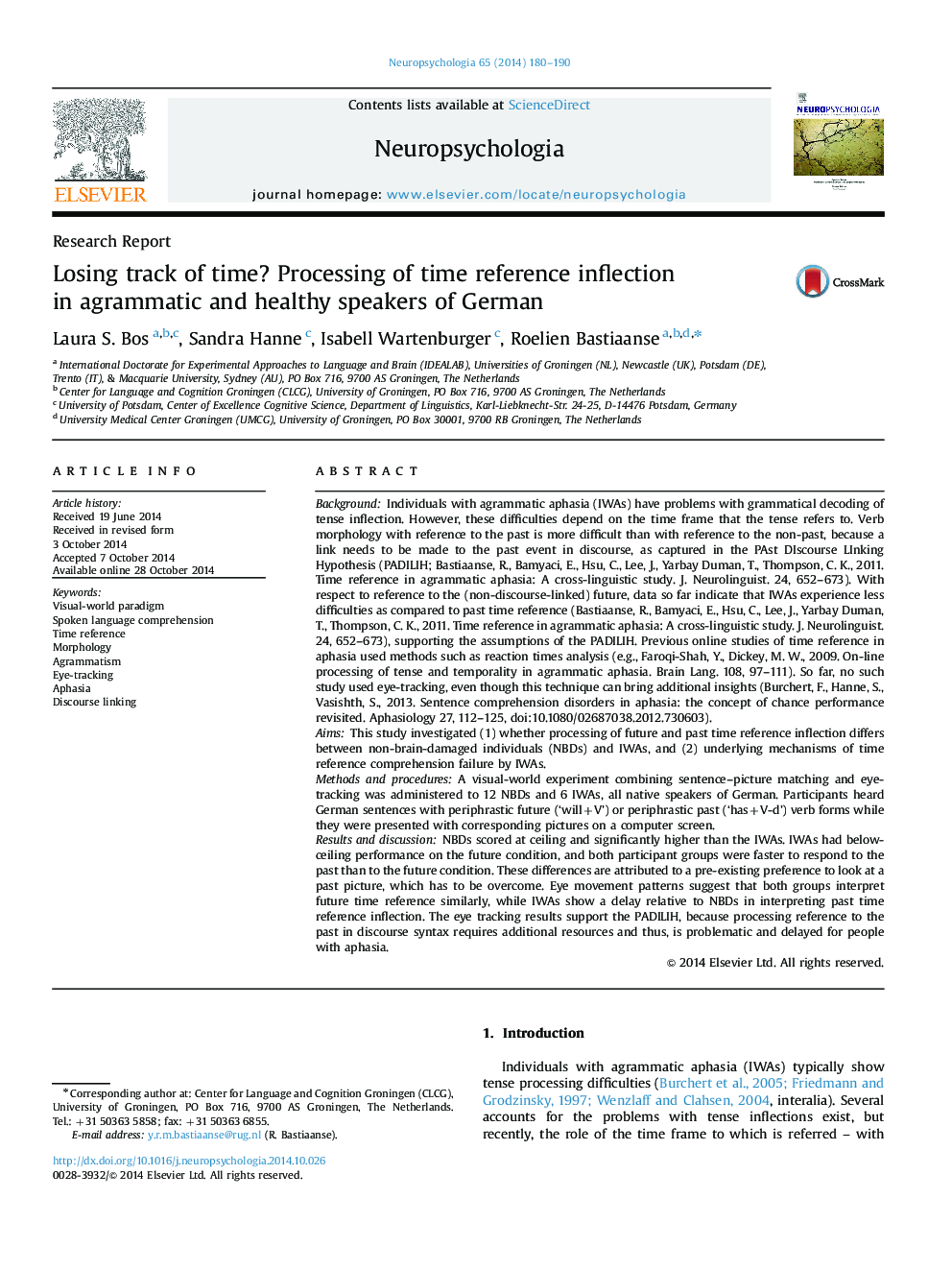| Article ID | Journal | Published Year | Pages | File Type |
|---|---|---|---|---|
| 7320766 | Neuropsychologia | 2014 | 11 Pages |
Abstract
NBDs scored at ceiling and significantly higher than the IWAs. IWAs had below-ceiling performance on the future condition, and both participant groups were faster to respond to the past than to the future condition. These differences are attributed to a pre-existing preference to look at a past picture, which has to be overcome. Eye movement patterns suggest that both groups interpret future time reference similarly, while IWAs show a delay relative to NBDs in interpreting past time reference inflection. The eye tracking results support the PADILIH, because processing reference to the past in discourse syntax requires additional resources and thus, is problematic and delayed for people with aphasia.
Keywords
Related Topics
Life Sciences
Neuroscience
Behavioral Neuroscience
Authors
Laura S. Bos, Sandra Hanne, Isabell Wartenburger, Roelien Bastiaanse,
